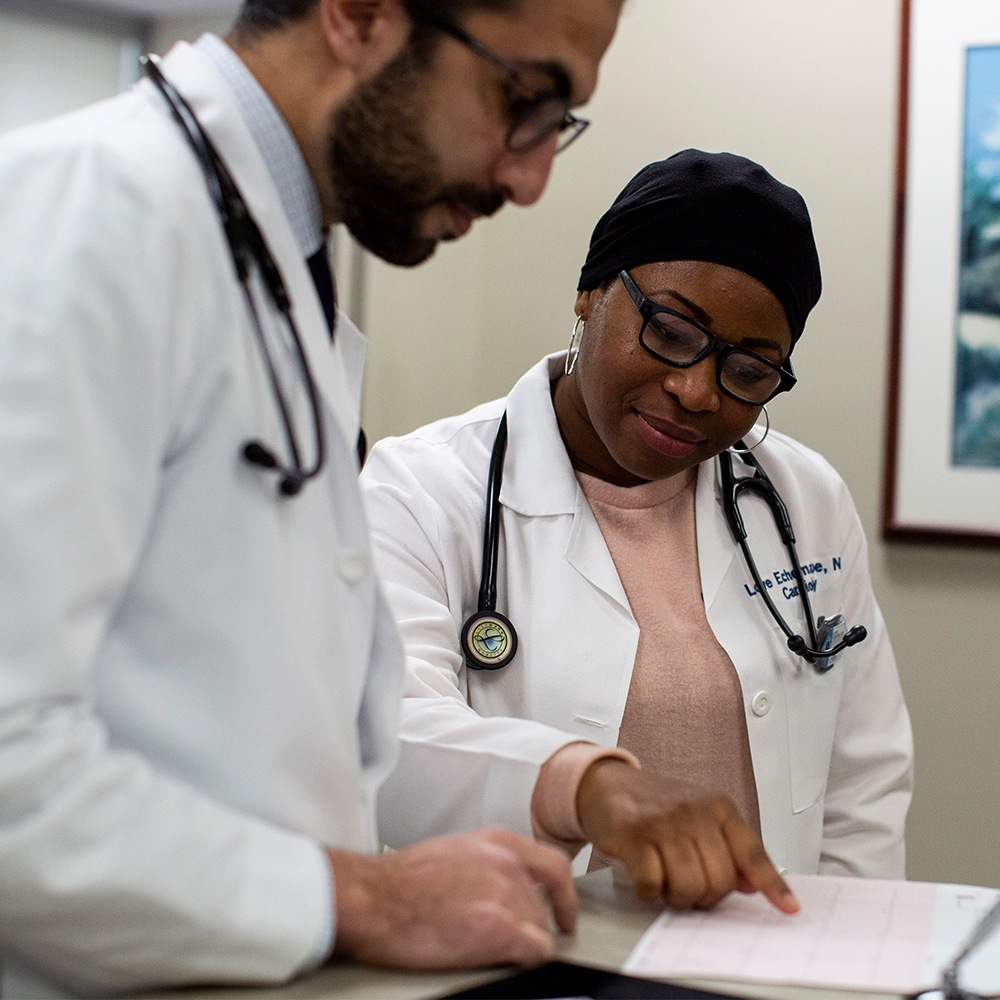Peripheral Vascular Disease (carotid artery disease, peripheral arterial/vascular disease)

Overview
What is Peripheral Vascular Disease?
Peripheral vascular disease (PVD) is a slow and progressive condition primarily caused by atherosclerosis when the blood vessels in the feet and legs are narrowed and restrict blood flow due to the build up of plaque in the blood vessels. Blood vessels in the legs are usually the most affected although atherosclerosis can affect any blood vessels throughout the body. When blood vessels are blocked or narrowed the part of the body it supplies doesn’t get enough oxygen. This is called ischemia and can cause a variety of symptoms for the affected area. Causes of peripheral vascular disease are:
- Diabetes as high blood sugar levels can damage blood vessels over time.
- Blood clots.
- Coronary artery disease (CAD).
- Infection.
- Injury to the arms or legs.
- Obesity.
- Age.
- Family history of heart disease, high blood pressure, stroke and high cholesterol.
- Inflammation of the arteries called arteritis.
- Physical inactivity.
- Smoking.
Symptoms
Peripheral Vascular Disease Symptoms
The most common symptom of peripheral vascular disease is painful leg cramping, especially during physical activity, which goes away when you rest. Leg pain at night is also common. Other symptoms include:
- Numbness, weakness or heaviness in the leg affected.
- Burning or aching pain in the feet or toes.
- Pain the buttock, thighs or hips.
- Restricted mobility..
- Hair loss on the leg.
- A sore on the leg, ankle or foot that won’t heal.
- Thickened, opaque toenails.
- Reddish-blue discoloration of the extremities.
- Impotence.
PVD is usually not an emergency, but you should see your doctor for proper diagnosis and treatment to prevent further damage to your heart and blood vessels. You should get immediate medical care or call 911 if you have the following symptoms.
- Pain in your chest, upper back, neck, jaw or shoulder.
- Fainting.
- Sudden numbness or weakness or paralysis of the face, arm or leg especially on one side of your body.
- Trouble speaking and confusion.
- Sudden trouble seeing in one or both eyes.
- Loss of balance.
- Sudden and severe headache.

Risks
Peripheral Vascular Disease Risks and Complications
Complications of peripheral vascular disease may include:
- Amputation of a limb.
- Restricted mobility.
- Severe pain in the affected extremity.
- Stroke.
- Wounds that won’t heal.

Diagnosis
Peripheral Vascular Disease Diagnosis
Your doctor will complete a medical history and physical exam and may order the following tests:
Edinburg Claudication Questionnaire
Edinburg Claudication Questionnaire is a series of 6 questions and a pain diagram accurate in diagnosing PVD.
Angiogram
Angiogram is an X-ray of the arteries and veins to detect blockage or narrowing.
Ankle-brachial index
Ankle-brachial index is a comparison of the blood pressure in your ankle with the blood pressure in your arm.
Doppler ultrasound flow studies
Doppler ultrasound flow studies use high-frequency sound waves and a computer to measure and assess blood flow.
MRA
Magnetic resonance angiography (MRA) produces detailed images of organs and structure of the body.
Treadmill exercise test
Treadmill exercise test that allows your doctor to monitor blood circulation during exercise.
Treatments
Peripheral Vascular Disease Treatments
The primary goals of treating PVD is to control symptoms and slow the disease process in order to lower the risk of a heart attack, stroke or other complications. Treatment options include:
- Lifestyle changes such as:
- Regular exercise
- Eating nutritious and low fat food
- Quitting smoking. A very strong risk factor for PVD
- Limit use of alcohol
- Treatment of underlying conditions such as diabetes, high blood pressure and high cholesterol.
- Medication to increase blood flow such as “blood thinners” and medicines to relax the blood vessels.
- Vascular surgery is where your doctor reroutes the blood flow in the blocked area, using a bypass graft from another blood vessel or a stent.
- Angioplasty is when your doctor inserts a catheter to create a larger opening in the artery to increase blood flow. There are several types of angioplasty:
- Balloon angioplasty is when a small balloon is inflated inside the blocked artery.
- Atherectomy is when the blocked artery is shaved away to increase blood flow.
- Laser angioplasty uses a laser to open up the blockage in the artery.
- Stent angioplasty is when a coil is expanded and placed in the blocked artery to increase blood flow.
Your Saint John’s Physician Partners cardiologist will discuss your treatment options so you can make an informed decision.

Specialists

















